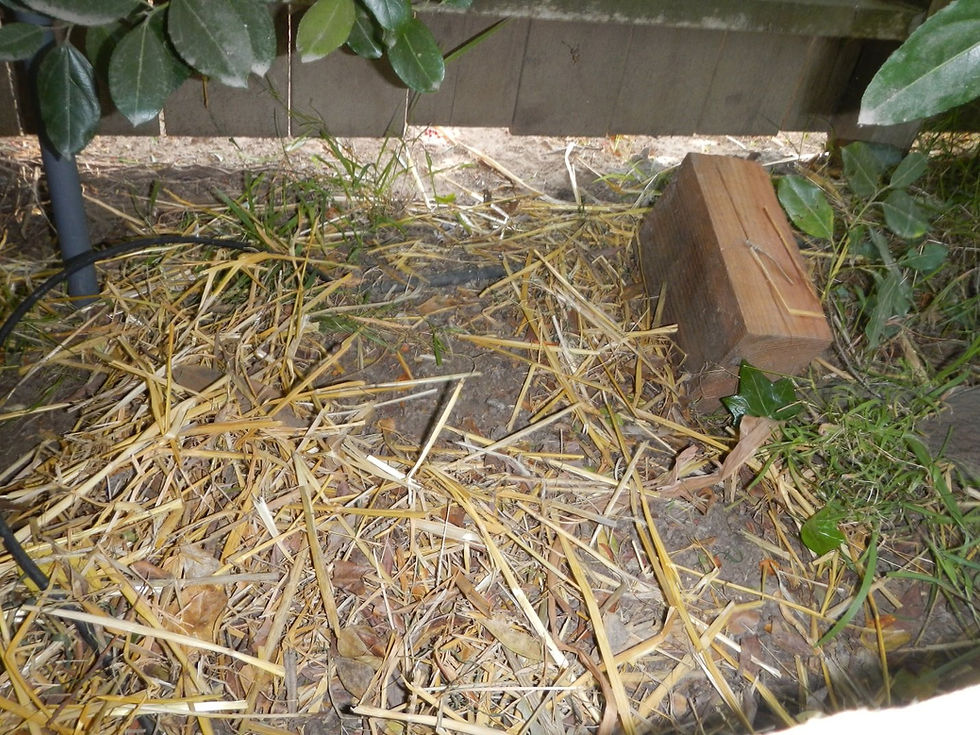Identifying Wildlife Pathways In Your Yard
- The Skunk Corner

- Aug 20, 2017
- 3 min read
Many backyard mammals, from rodents to raccoons, follow specific pathways through neighborhoods. By knowing where these pathways are, you can observe wildlife more easily and make more informed wildlife management decisions. Here we will look at the pathways made by various backyard animals and the signs that will help you identify them.
Skunk, Raccoon and Opossum Pathways
Raccoons and opossums are good climbers, so their pathways use both the ground and higher objects such as fences and trees. The ground-level portions of their pathways are often trampled from frequent use, and this makes them easier to identify. Pathways above the ground are generally harder to identify, but look for scratch marks on fences (suggesting raccoons) or gaps in vines growing on a fence. Skunks, which cannot climb very well, follow ground-level paths that often go under fences where raccoons or opossums might climb over. These paths look similar to the trampled paths of raccoons or opossums.

Once you've identified the pathways of skunks, raccoons, and opossums, you can:
- Know where to look if you want to find wildlife. By quietly watching a pathway at night, you may observe an animal using it.
- Avoid blocking the pathway. If you're building a fence, wall, or other structure, knowing where wildlife travel will enable you to accommodate them in your plan.
- Avoid conflicts. If you don't want wildlife to be attracted to an item in your yard, such as a compost bin or garden box, it helps to not put that item in the existing path of nocturnal mammals. However, animals will alter their paths if they find a steady source of food, so it's also important to use other methods, for example putting compost in a fully enclosed bin instead of a pile, or removing unnecessary attractants (for example fallen fruit) from a garden.
Rat and Mouse Pathways
Rats and mice rarely use the ground as a pathway. Instead, to avoid making noise that will reveal themselves, they prefer to run along branches and fence rails. The best indicator of a rodent pathway is scat. Rodent scat is roughly the shape of rice grains and can usually be found along fence rails that rodents travel on. You may also find evidence of gnawing.
Once you have identified rodent pathways in your yard, you can:
- Effectively place live traps, snap traps, repellents and other rodent control items. These items work the best when placed directly in a rodent's path.
- Avoid conflicts. While rodents will eventually find any attractant you have in your yard, such as a birdfeeder, it would only worsen the problem if you located the item in an area with high rodent activity.
- Find out what's causing a problem. If you have a problem with overpopulation of rodents in your yard, there are likely ways you can minimize it. By following the pathways of rodents, you may find a major attractant that can be removed. For example, the pathway might lead you to an unused shed or compost bin that you didn't realize was harboring rodents. There will always be some rodents in your yard, and this is not a problem, but by removing attractants you can prevent the population from growing.
Correction (9/2/17): The article originally stated that skunks cannot climb and ambiguously suggested putting up "proper barriers" to keep wildlife out of areas such as gardens or compost bins. Although skunks are not good climbers like raccoons or opossums and will not climb fences or trees, they can climb over lower barriers and into raised beds. "Proper barriers" to keep skunks, raccoons, and opossums out of areas will vary greatly depending on the area being protected, and sometimes are not feasible to put up. For example, simple barriers like a low wall around a garden will not keep animals out, including skunks. The use of proper barriers may include, for example, an enclosed bin (with a lid) for compost instead of an exposed pile.





Comments